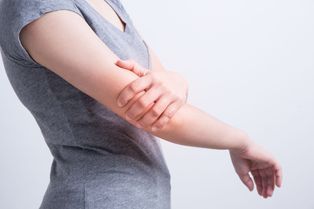
The pain that affects the elbow is characterized as acute, dull, burning, pressure discomfort pain, or pain that may be recurrent, constant or shooting. These types of pain occur because of a strain, sprain, fracture, dislocation, infection, autoimmune disease, cancer or trauma to the structures in and adjacent to the joints of the elbow. Although some causes of elbow pain can lead to one type of pain that is predominant in the other, it is not unusual for patients to experience several types of pain.
Elbow pain is usually not serious, but since you use your elbow to do many jobs, as a result of this, it can be frustrating. The elbow is a complex joint. This allows an individual to extend and flex, as well as turn your arms and forearms. Since most movements are a combination of these procedures, it may sometimes be difficult to describe exactly which movement causes pain.
What are the Causes of Elbow Pain?
Elbow pain has many causes. Most cases of elbow pain occur as a result of excessive use or strain exerted on the joint, usually because of work, sports, hobbies or accidents. The most common causes of elbow pain are listed below:
1. Sprains and strains: Sprains are stretching and/or tearing of the ligaments which joint the two bones together, while a strain, on the other hand, is the stretching or tearing of the muscle or tendon (a tendon is a fibrous tissue that connects the muscles to the bone as a result of excessive force).
2. Tendinitis: Inflammation and/or irritation of the tendons that attach the muscles to the bones in the elbow is usually a result of excessive use. 3. Bursitis: This is the inflammation of the bursae, a small fluid-filled sac that lubricates the bones in the elbow.
4. Tennis elbow: This is also referred to as lateral epicondylitis. It occurs as a result of inflammation of the tendon of the muscles of the forearm where they join to the outer elbow joint.
3. Golfer’s elbow: This is also known as a medial epicondylitis, it also occurs as a result of tendon inflammation where the tendons are fixed to the forearm of the bony prominence of the inner elbow.
4. Throwing injury: This is also known as the "baseball pitcher's elbow", these injuries are due to excessive use of the elbow. It is common among baseball players. Other sports involving similar mechanisms create similar injuries that include elbow structures such as detachment of the tendon and other tissues injuries that are commonly seen in children playing with the Small League.
5. Radial nerve compression: This is the pinching or compression of the radial nerve which passes through the elbow joint.
6. Ulnar nerve compression (or entrapment): Pinching or compression of the nerve by swelling or displacement.
7. Ligament tears: These are the ligament that is torn as a result of excessive force on the elbow joint.
8. Injuries to any elbow component: The trauma of any part of the elbow joints and/or adjacent structures that work in tandem with the joints of the elbow (forearm structures upper arm and shoulders).
What are the Symptoms of Elbow Pain?
Elbow pain can cause patients to use other joints to compensate for the loss of movement. This can cause discomfort or pain in other joints or muscles, for example, shoulders, wrists, forearms, or hand.
Elbow Pain Treatment
Treatment for Elbow Pain requires restoring the circulation and blood flow to the affected structures in your elbow. Pain is caused when swelling, inflammation and decreased circulation generate a blockage, which causes blood flow to be interrupted or slowed. Treatment for this issue requires breaking up the accumulated fluids in your elbow to allow for improved healing and quicker recovery.
Products recommended for symptoms of swelling, redness, pain, and inflammation, and if coolness makes your pain feel better:
Ice Substitute Poultice
Bruise Relief Liniment
Muscle Therapy Massage Oil
Products recommended when swelling and inflammation are gone, but you still feel pain, stiffness, weakness, and/or sensitivity in cold and damp weather, and if heat makes your pain feel better:
Pain Relief Liniment
Tendon and Ligament Poultice
Muscle Therapy Massage Oil





